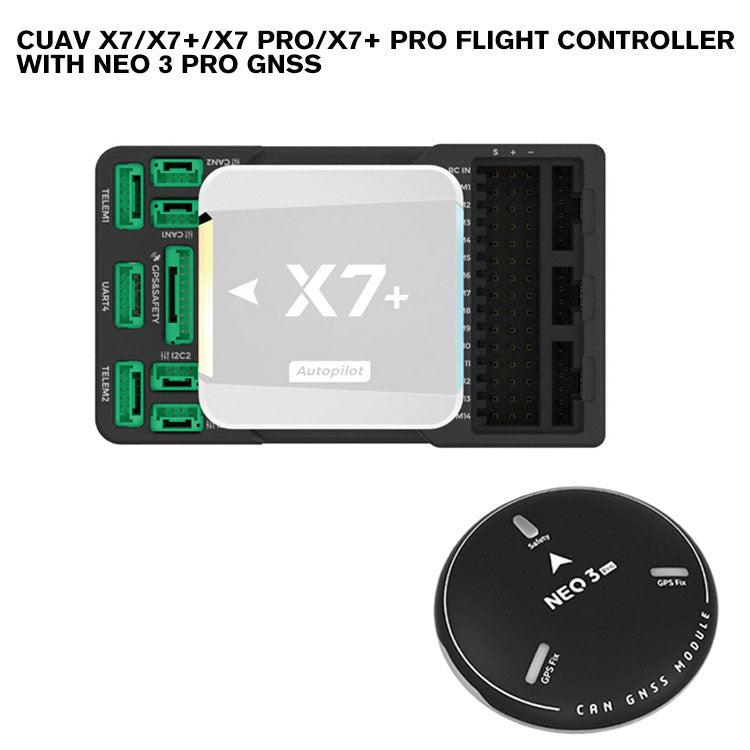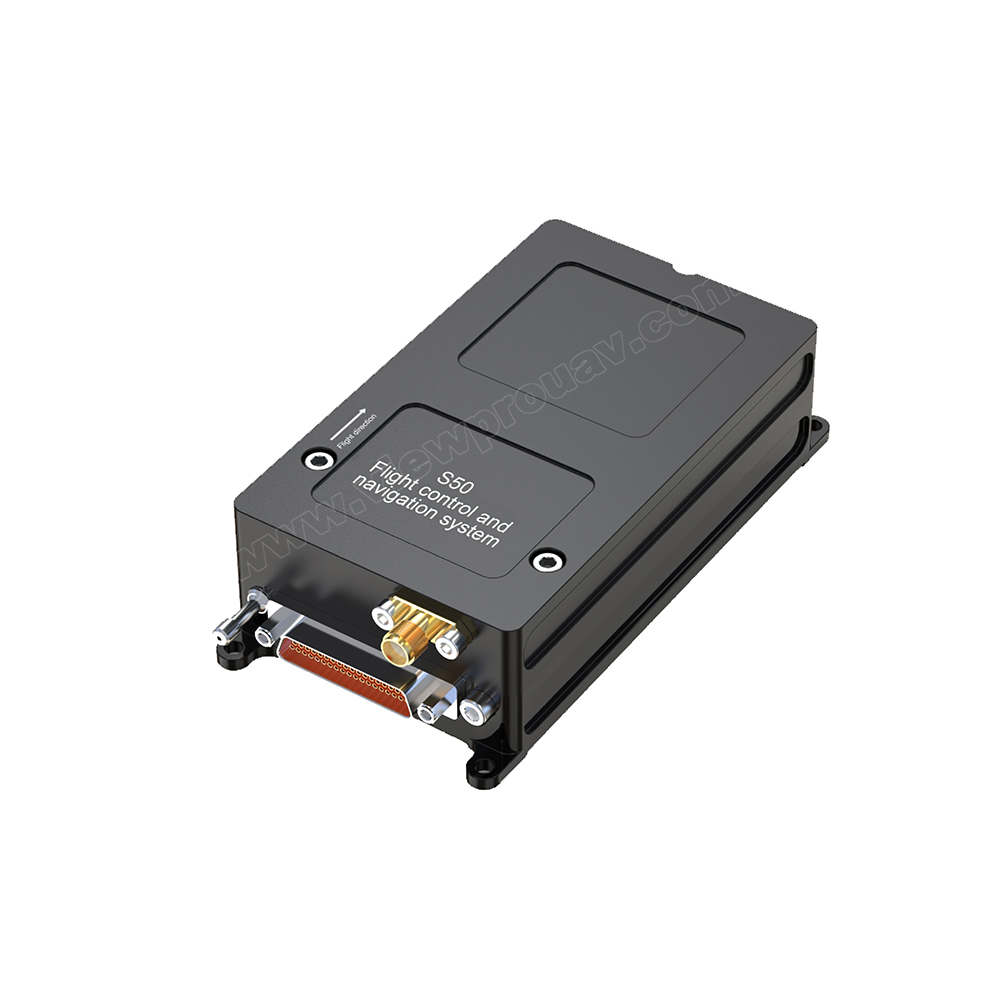SparkNavi Drone Flight Controller and GNSS/INS Made in Taiwan: Precision Navigation for Drones
SparkNavi Drone Flight Controller and GNSS/INS Made in Taiwan: Precision Navigation for Drones
Blog Article
Checking Out the Role of Drone Trip Controllers in Enhancing Trip Stability and Navigation Performance
The development of drone innovation has actually substantially increased the relevance of trip controllers, which serve as the brain of these aerial lorries. By integrating real-time information from a variety of sensors, flight controllers enhance flight security and navigating efficiency, guaranteeing that drones can operate efficiently even in complicated environments.

Understanding Trip Controllers
Trip controllers are indispensable components in the functioning of drones, working as the brains that maintain and take care of trip procedures. These innovative tools procedure data from different sensors, including accelerometers, gyroscopes, and GPS, to guarantee that the drone preserves its intended flight path. The flight controller translates this data and performs commands based on pre-defined algorithms, enabling the drone to react to ecological modifications, such as wind or challenges.
The main function of a trip controller is to keep security throughout trip. It attains this by making real-time modifications to the drone's motors and control surfaces, making sure balance and control. In addition, modern-day flight controllers incorporate advanced attributes such as waypoint navigating, enabling automated flight paths and enhanced functional performance.
Comprehending the design of flight controllers is essential for both professionals and hobbyists. They generally contain a microcontroller, firmware, and different interfaces for sensor input and interaction. As modern technology developments, flight controllers have actually ended up being more qualified and small, incorporating man-made intelligence to boost decision-making procedures and adjust to intricate flight scenarios. This development signifies a crucial advancement in the drone industry, paving the means for a lot more innovative applications and safer procedures.
Trick Parts of Flight Stability
Achieving optimum trip stability in drones counts on numerous vital components that work in concert to make sure smooth and regulated operations. Central to this stability is the flight controller itself, which refines information from various sensors to preserve the preferred trip perspective. This consists of accelerometers and gyroscopes that measure activity and alignment, permitting real-time adjustments to the drone's setting.
One more critical component is the electronic speed controllers (ESCs), which regulate the power provided to the motors. By finely tuning motor rates in response to flight controller commands, ESCs help maintain equilibrium and counteract disruptions triggered by wind or unexpected motions.
In addition, the layout of the drone's framework plays an essential function in flight stability. A well-structured structure decreases resonances and improves the general aerodynamic profile, contributing to smoother trip features. The integration of innovative formulas within the flight controller aids in anticipating modifications, making sure a receptive and adaptable flight experience.
With each other, these elements form a cohesive system that enhances a drone's stability, permitting precise maneuvering and boosted efficiency in different flight problems.
Navigation Performance Methods
Efficiency in navigation is vital for optimizing drone procedures, particularly in intricate atmospheres. Effective navigating techniques enhance the capability of drones to traverse tough terrains and stay clear of obstacles, consequently improving functional efficiency and security.
One prominent method is the implementation of sophisticated GPS and inertial dimension units (IMUs) that give accurate area tracking and positioning information. These modern technologies allow drones to determine optimum flight courses in real-time, thinking about different factors such as wind conditions and possible obstacles.
One more strategy involves using formulas for course planning and optimization. Algorithms such as A * and Dijkstra's formula can be released to figure out one of the most efficient path while minimizing energy usage and trip time. Integrating equipment learning models can allow drones to adaptively discover from their settings, their website boosting navigating capabilities with experience.

Impact on Autonomous Drones
The combination of sophisticated navigating strategies has actually greatly changed the capacities this website of independent drones, enabling them to operate with greater autonomy and precision. SparkNavi drone flight controller and GNSS/INS made in taiwan. These enhancements are mostly connected to innovative trip controllers that make use of real-time information handling and sensing unit combination, allowing drones to browse complicated atmospheres flawlessly
The impact on autonomous drones extends past plain navigating; it includes enhanced barrier evasion, improved stability during vibrant problems, and boosted objective dependability. By leveraging algorithms that incorporate machine learning and synthetic intelligence, drones can adjust to altering scenarios, making notified decisions that optimize their trip paths while reducing threats.
In addition, the application of robust trip controllers has assisted in the execution of complex jobs, such as airborne assessments, delivery solutions, and agricultural monitoring, with marginal human intervention. This capability not just enhances operations yet likewise reduces human mistake, thereby enhancing total safety.
As an outcome, the operational extent of self-governing drones has actually broadened considerably, making them important devices in different sectors. Their capability to execute efficiently in varied situations highlights the essential role that progressed trip controllers play fit the future of unmanned airborne systems.
Future Trends in Flight Control
Regularly, developments in trip control technology are poised to redefine the landscape of drone procedures in the coming years. Arising trends show a considerable change in the direction of improved fabricated knowledge (AI) integration, allowing flight controllers to refine real-time data more efficiently. This development will promote better decision-making abilities, enabling drones to adapt to dynamic ecological conditions autonomously.
Moreover, the application of maker understanding formulas is right here expected to improve anticipating upkeep, thus lessening downtime and prolonging the lifecycle of drone elements. This aggressive method to maintenance will be vital as drone applications broaden across different sectors, from farming to logistics.

.png)
Lastly, improvements in safe interaction procedures will certainly attend to safety and security and regulative concerns, making certain that drones can operate effortlessly in busy airspaces (SparkNavi drone flight controller and GNSS/INS made in taiwan). Jointly, these patterns aim in the direction of a future where flight control systems are not just smarter and more efficient however likewise capable of running securely in a progressively integrated airspace
Final Thought
To conclude, drone trip controllers are essential to improving trip stability and navigation performance through the innovative processing of sensor data. By keeping optimum flight attitudes and utilizing innovative algorithms for course optimization and barrier evasion, these controllers considerably add to the freedom and functional safety and security of drones. As innovation remains to advance, further developments in flight control systems are expected, guaranteeing enhanced efficiency and broadened capabilities in the realm of unmanned airborne automobiles.
By incorporating real-time data from a variety of sensing units, flight controllers enhance flight stability and navigation efficiency, guaranteeing that drones can operate smoothly even in complicated settings.Trip controllers are integral components in the functioning of drones, offering as the minds that maintain and handle flight operations. Additionally, modern trip controllers include sophisticated functions such as waypoint navigating, enabling for automated flight paths and boosted functional effectiveness.
Central to this stability is the trip controller itself, which processes data from various sensors to maintain the desired flight attitude.In conclusion, drone trip controllers are essential to boosting flight stability and navigation efficiency via the advanced processing of sensing unit information.
Report this page